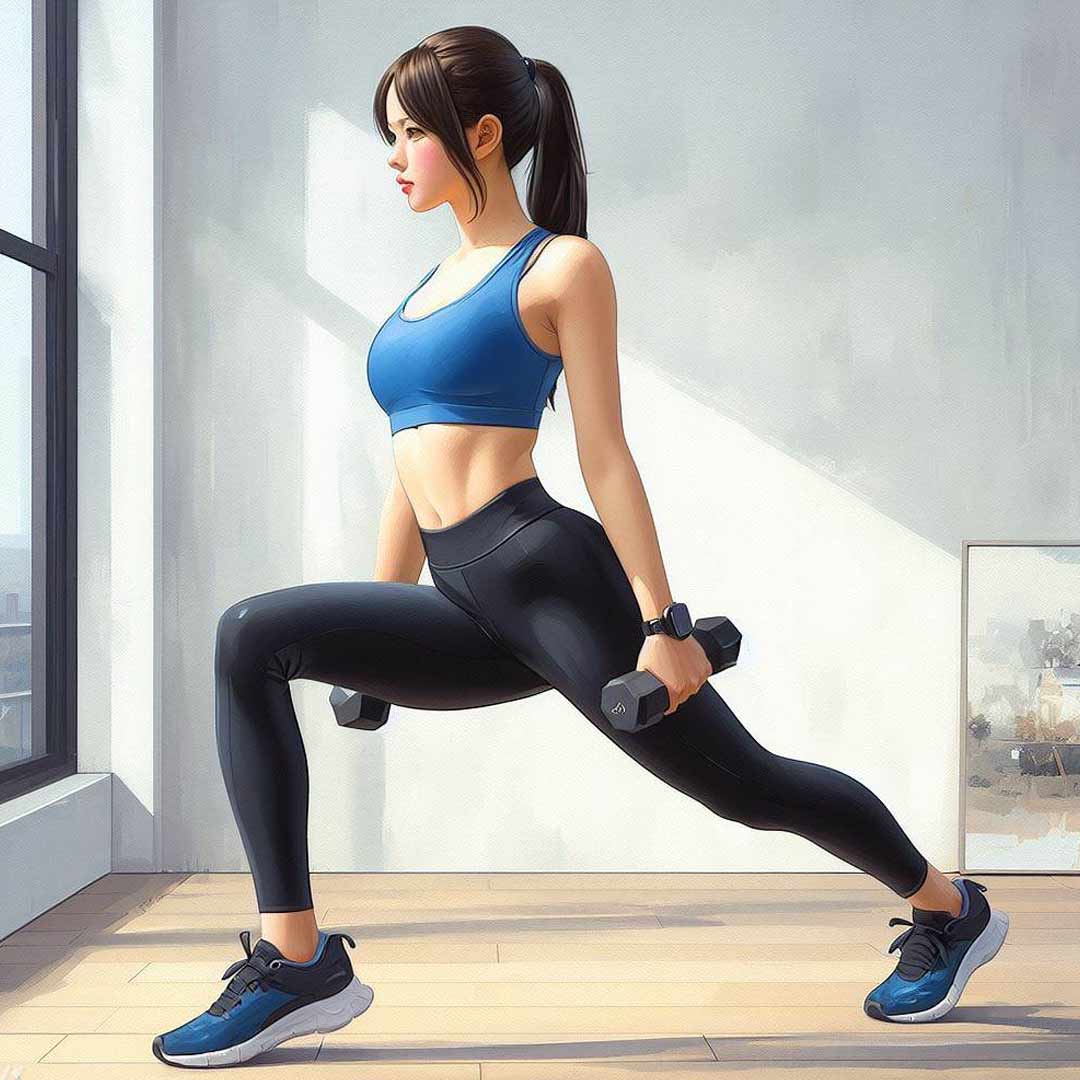Hip dips are the inward curves that appear on the sides of your hips, just below the hip bones. They are also known as violin hips, because they resemble the shape of a violin. Hip dips are not a flaw or a problem, but a natural variation of the human body. They are mostly determined by your bone structure and genetics, and they are not a sign of being overweight or unfit.
However, some people may feel insecure or unhappy about their hip dips, and may want to reduce their appearance or make them less noticeable.
While you cannot change your bone structure or genetics, you can do some exercises to tone and sculpt the muscles around your hips, such as the glutes, the hip flexors, the hip abductors, and the hip adductors. These exercises can help you build muscle mass, improve your posture, and enhance your curves.
In this article, we will show you some of the best exercises for hip dips that you can do at home or at the gym, with or without equipment.
These exercises will target the different muscle groups of your hips, and help you achieve a stronger and more balanced lower body. You can do these exercises as part of your regular workout routine, or as a specific hip dip workout.
We recommend doing them at least three times a week, for 15 to 20 minutes each session.
Before you start, make sure you warm up properly, and stretch your muscles after the workout. Also, remember that exercises alone are not enough to get rid of hip dips. You also need to follow a healthy and balanced diet, drink plenty of water, and get enough sleep and rest.
These habits will help you optimize your results, and improve your overall health and well-being.
Table of Contents
Exercises for Hip Dips
Here are some of the best exercises for hip dips that you can try. You can do them with or without resistance bands, dumbbells, or ankle weights, depending on your preference and fitness level.
For each exercise, we suggest doing 3 sets of 15 repetitions, with a 30-second rest between sets. You can adjust the number of sets and repetitions according to your goals and abilities.
Side Hip Openers (Fire Hydrants)

This exercise works your outer thighs, hips, and side glutes. It also helps to improve your hip mobility and stability.
- Start on your hands and knees, with your hands under your shoulders, and your knees under your hips. Keep your back straight, and your core engaged.
- Lift your right leg to the side, keeping your knee bent at a 90-degree angle. Try to raise your leg as high as you can, without rotating your hips or lower back.
- Hold for a second, then lower your leg back to the starting position.
- Repeat with your left leg, and alternate sides until you complete the set.
Side hip openers are exercises that stretch and strengthen the muscles around your hips, such as the hip flexors, glutes, and groin. They can help improve your mobility, posture, and balance. They can also reduce pain and stiffness in your lower back and pelvis.
Here are some examples of side hip openers that you can try:
- Standing lunge stretch: This stretch works your hips, butt, and thighs. To do it, stand with your feet hip-width apart and step your right foot forward. Bend your right knee to 90 degrees and lean slightly forward. Keep your left leg straight and your back flat. Hold for 15 to 30 seconds, then switch legs.
- Spiderman stretch: This stretch targets the muscles in your hip and groin. To do it, start in a push-up position and bring your right knee to your right elbow. Drop your hips down and hold for 30 seconds. Return to the starting position and repeat with the left leg.
- Clamshells: This exercise strengthens your glutes and outer thighs. To do it, lie on your right side with your knees bent and stacked. Keep your feet together and your hips aligned. Lift your left knee up as high as you can without moving your hips. Lower it back down and repeat. Do 15 to 20 reps, then switch sides
- Horizontal squat stretch: This stretch opens up your inner thighs and hips. To do it, stand with your feet wider than shoulder-width apart and your toes pointing out. Bend your knees and lower your hips until your thighs are parallel to the floor. Place your elbows on your inner knees and press them out gently. Hold for 15 to 30 seconds, then stand up.
- Side angle pose: This pose stretches your hips, hamstrings, and side body. To do it, stand with your feet about 4 feet apart and your right foot turned 90 degrees to the right. Bend your right knee and place your right hand on the floor outside your right foot. Reach your left arm over your head and look up at your left hand. Hold for 15 to 30 seconds, then switch sides
Standing Kickback Lunges

This exercise is great for providing balance and stability in the body. It works your thighs, glutes, and hips.
- Stand with your feet shoulder-width apart, and your hands on your hips. Keep your back straight, and your core engaged.
- Take a big step back with your right leg, and lower your body into a lunge position. Your left knee should be bent at a 90-degree angle, and your right knee should be hovering above the floor.
- As you stand up, kick your right leg back, squeezing your glutes. Try to keep your leg straight, and your hips facing forward.
- Bring your right leg back to the lunge position, and repeat the movement.
- Do the same with your left leg, and alternate sides until you complete the set.
Standing Side Leg Lifts

This exercise targets your hip abductors, which are the muscles that move your legs away from the center of your body. It also works your core and your balance.
- Stand with your feet together, and your hands on your hips. Keep your back straight, and your core engaged.
- Shift your weight to your left leg, and lift your right leg to the side, as high as you can. Keep your toes pointed forward, and your hips level.
- Hold for a second, then lower your leg back to the starting position.
- Repeat with your left leg, and alternate sides until you complete the set.
Donkey Kicks
This exercise works your glutes, especially the gluteus maximus, which is the largest and most powerful muscle in your buttocks. It also helps to strengthen your lower back and your core.
- Start on your hands and knees, with your hands under your shoulders, and your knees under your hips. Keep your back straight, and your core engaged.
- Lift your right leg up, keeping your knee bent at a 90-degree angle. Try to raise your leg as high as you can, without arching your back or twisting your hips.
- Hold for a second, then lower your leg back to the starting position.
- Repeat with your left leg, and alternate sides until you complete the set.
Glute Bridges
Glute bridges are a great hip-strengthening exercise, as they train all of the gluteal muscles. They also work your hamstrings, your lower back, and your core.
However, if you want to challenge yourself more, you can try hip thrusts, which are a similar but more advanced exercise. Hip thrusts can help you activate your glutes more, and increase your hip extension strength and power.
To learn more about the differences and benefits of glute bridges and hip thrusts, you can read this article: [Glute Bridge vs Hip Thrust: Comparison and Detailed Guide]. This article will help you understand how to perform, the advantages, and the drawbacks of both exercises.
Here are steps on how to perform Glute bridges:
- Lie on your back, with your knees bent, and your feet flat on the floor. Your feet should be hip-width apart, and your arms should be by your sides.
- Lift your hips off the floor, squeezing your glutes. Your body should form a straight line from your shoulders to your knees.
- Hold for a second, then lower your hips back to the starting position.
- Repeat until you complete the set.
Conclusion
Hip dips are a natural and normal feature of the human body, and they are not something to be ashamed of or worried about. However, if you want to reduce their appearance or make them less noticeable, you can do some exercises to tone and sculpt the muscles around your hips. These exercises can help you build muscle mass, improve your posture, and enhance your curves.
The exercises we have shown you are some of the best exercises for hip dips that you can do at home or at the gym, with or without equipment. They target the different muscle groups of your hips, such as the glutes, the hip flexors, the hip abductors, and the hip adductors. These exercises can help you achieve a stronger and more balanced lower body.
You can do these exercises as part of your regular workout routine, or as a specific hip dip workout. We recommend doing them at least three times a week, for 15 to 20 minutes each session.
Before you start, make sure you warm up properly, and stretch your muscles after the workout. Also, remember that exercises alone are not enough to get rid of hip dips.
You also need to follow a healthy and balanced diet, drink plenty of water, and get enough sleep and rest. These habits will help you optimize your results, and improve your overall health and well-being.
We hope you enjoyed this article, and learned something new and useful. If you have any questions, comments, or feedback, please feel free to leave them below. We would love to hear from you. Thank you for reading, and happy exercising!
Frequently Asked Questions
What are hip dips?
Hip dips are the inward curves that appear on the sides of your hips, just below the hip bones. They are also known as violin hips, because they resemble the shape of a violin.
Can you get rid of hip dips?
You cannot get rid of hip dips completely, as they are part of your natural anatomy. However, you can reduce their appearance or make them less noticeable by doing some exercises to tone and sculpt the muscles around your hips.
What causes hip dips?
Hip dips are mostly caused by your bone structure and genetics. They depend on the width of your hips, the size and position of your femur, the length of your femoral neck, and the distribution of fat and muscle in your body.
What are the best exercises for hip dips?
Some of the best exercises for hip dips are side hip openers, standing kickback lunges, standing side leg lifts, donkey kicks, and glute bridges. These exercises target the different muscle groups of your hips, such as the glutes, the hip flexors, the hip abductors, and the hip adductors.
How often should you do exercises for hip dips?
You should do exercises for hip dips at least three times a week, for 15 to 20 minutes each session. You can do them as part of your regular workout routine, or as a specific hip dip workout.

